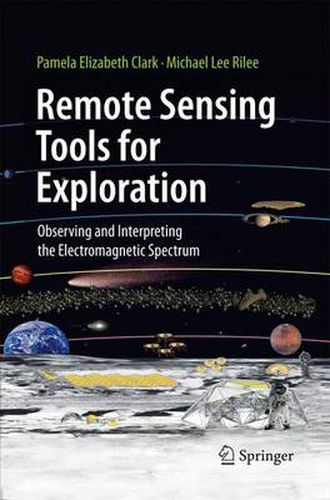Readings Newsletter
Become a Readings Member to make your shopping experience even easier.
Sign in or sign up for free!
You’re not far away from qualifying for FREE standard shipping within Australia
You’ve qualified for FREE standard shipping within Australia
The cart is loading…






This title is printed to order. This book may have been self-published. If so, we cannot guarantee the quality of the content. In the main most books will have gone through the editing process however some may not. We therefore suggest that you be aware of this before ordering this book. If in doubt check either the author or publisher’s details as we are unable to accept any returns unless they are faulty. Please contact us if you have any questions.
Remote Sensing from a New Perspective The idea for this book began many years ago, when I was asked to teach a course on remote sensing. Not long before that time, I had been part of the effort to develop the first database for planetary data with a common digital array format and interactive processing capabilities to correlate those data easily: the lunar consortium. All the available lunar remote sensing data were included, orbital and ground-based, ranging across the entire electromagnetic spectrum. I had used this powerful tool extensively, and, in that spirit, I was determined to create a course which covered the entire spectrum and a variety of targets. As I looked around for the equivalent of a textbook, which I was willing to pull together from several sources, I realized that available material was very heavily focused on the visual and near visual spectrum and on the Earth as a target. Even The Surveillant Science, edited by Edward Holz and published in 1973, which broke new ground in having diverse articles on most of the spectrum when it was created, focused entirely on the Earth. My personal favorite, the exceedingly well written book on remote sensing by Floyd Sabins first published in 1978, covered the visual, infrared, and microwave portions of the spectrum beautifully but focused on the Earth as well. Unhindered, I developed what I called ‘packets’ of material for each part of the spectrum.
$9.00 standard shipping within Australia
FREE standard shipping within Australia for orders over $100.00
Express & International shipping calculated at checkout
This title is printed to order. This book may have been self-published. If so, we cannot guarantee the quality of the content. In the main most books will have gone through the editing process however some may not. We therefore suggest that you be aware of this before ordering this book. If in doubt check either the author or publisher’s details as we are unable to accept any returns unless they are faulty. Please contact us if you have any questions.
Remote Sensing from a New Perspective The idea for this book began many years ago, when I was asked to teach a course on remote sensing. Not long before that time, I had been part of the effort to develop the first database for planetary data with a common digital array format and interactive processing capabilities to correlate those data easily: the lunar consortium. All the available lunar remote sensing data were included, orbital and ground-based, ranging across the entire electromagnetic spectrum. I had used this powerful tool extensively, and, in that spirit, I was determined to create a course which covered the entire spectrum and a variety of targets. As I looked around for the equivalent of a textbook, which I was willing to pull together from several sources, I realized that available material was very heavily focused on the visual and near visual spectrum and on the Earth as a target. Even The Surveillant Science, edited by Edward Holz and published in 1973, which broke new ground in having diverse articles on most of the spectrum when it was created, focused entirely on the Earth. My personal favorite, the exceedingly well written book on remote sensing by Floyd Sabins first published in 1978, covered the visual, infrared, and microwave portions of the spectrum beautifully but focused on the Earth as well. Unhindered, I developed what I called ‘packets’ of material for each part of the spectrum.